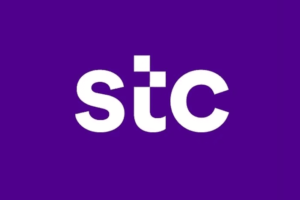 Huawei, a leading global information and communications technology (ICT) solutions provider, has closed the curtains on its 2011 Cloud Computing Conference held in Shenzhen, China. The four-day event brought together more than 1,000 partners and customers to discuss the latest progress of, and a preview of future trends for the cloud computing industry, with Huawei also providing insight into its own cloud computing strategy.
Huawei, a leading global information and communications technology (ICT) solutions provider, has closed the curtains on its 2011 Cloud Computing Conference held in Shenzhen, China. The four-day event brought together more than 1,000 partners and customers to discuss the latest progress of, and a preview of future trends for the cloud computing industry, with Huawei also providing insight into its own cloud computing strategy.
Huawei’s recent global strategy to target the enterprise market is also giving businesses across industries the opportunity to experience the benefits of cloud applications. Offering a range of cloud computing-based data centre and application services including Huawei’s Virtual Desktop Infrastructure (VDI), companies across industries who attended the global event were able to experience different scenarios on how the cloud could enable organizations to operate more efficiently.
Regional economic competitiveness and a broad commitment to business innovation means that the uptake of cloud computing is growing rapidly in the Middle East as well as shaping technology investment decisions globally. According to the International Data Corporation (IDC), the public cloud segment is set to flourish with cloud servers expected to grow from an USD 4 billion market opportunity in 2010 to USD 12.6 billion by 2014. Huawei believes the Middle East region will claim a large part of this global market growth.
“Cloud computing is a core element of Huawei’s global ICT strategy,” said Li Sanqi, Chief Technology Officer of Huawei’s IT Product Line. “Huawei is a major investor in the cloud computing market and we bring abundant cloud computing expertise, world-class engineers and technology experts, and a forward-looking perspective to the dual challenges of anticipating the future needs of the industry and meeting those needs with the best products and solutions. Our goal is to be a global leader in the cloud computing market, and we look forward to continuing to support our global customers with cutting-edge cloud computing services and products.”
Alongside the conference, Huawei introduced its recently established IT Product Line as part of its commitment to deliver leading-edge cloud computing offerings. The IT Product Line will leverage an international team of more than 6,000 Huawei engineers in the United States, Canada, and China to drive development of the next generation of advanced cloud computing solutions.
At the conference, Huawei also showcased its latest portfolio of cloud computing products and solutions including Huawei’s advanced cloud-based Internet Data Center (IDC) solution; combining the latest technologies in intelligent management, energy saving, high density deployment and elastic scalability. Additional highlights from Huawei’s Tecal server family, Desktop Cloud, Cloud Platform, Cloud Storage and Media Cloud solutions were presented to help cloud services companies transform traditional data centers to cloud-based IDCs.
Earlier this year, Huawei spotlighted its cloud technology in deploying the world’s largest office desktop cloud system to meet the company’s own needs for advanced information security, IT system operation and maintenance management.
“Cloud computing is a competitive market,” said Mr. Li, “and Huawei’s ability to spur new innovation, rapidly incorporate new technologies and breakthroughs into our solutions, and leverage innovative business models has resulted in strong growth. We are excited to continue integrating cloud computing into more of our services and applications to drive growth and create opportunities for new win-wins in the industry ecosystem.”
Huawei officially announced its entry into the cloud computing market in 2010, and has since made cloud computing technology a high priority for R&D and investment. Huawei has joined hands with numerous partners, including Intel, IBM, Accenture, Citrix, and CA, to explore new cloud computing business models and practices. Huawei is refocusing its global R&D resources to help drive cloud computing innovation and promote its application across industries such as government, healthcare, education, and logistics.
May 10, 2025











